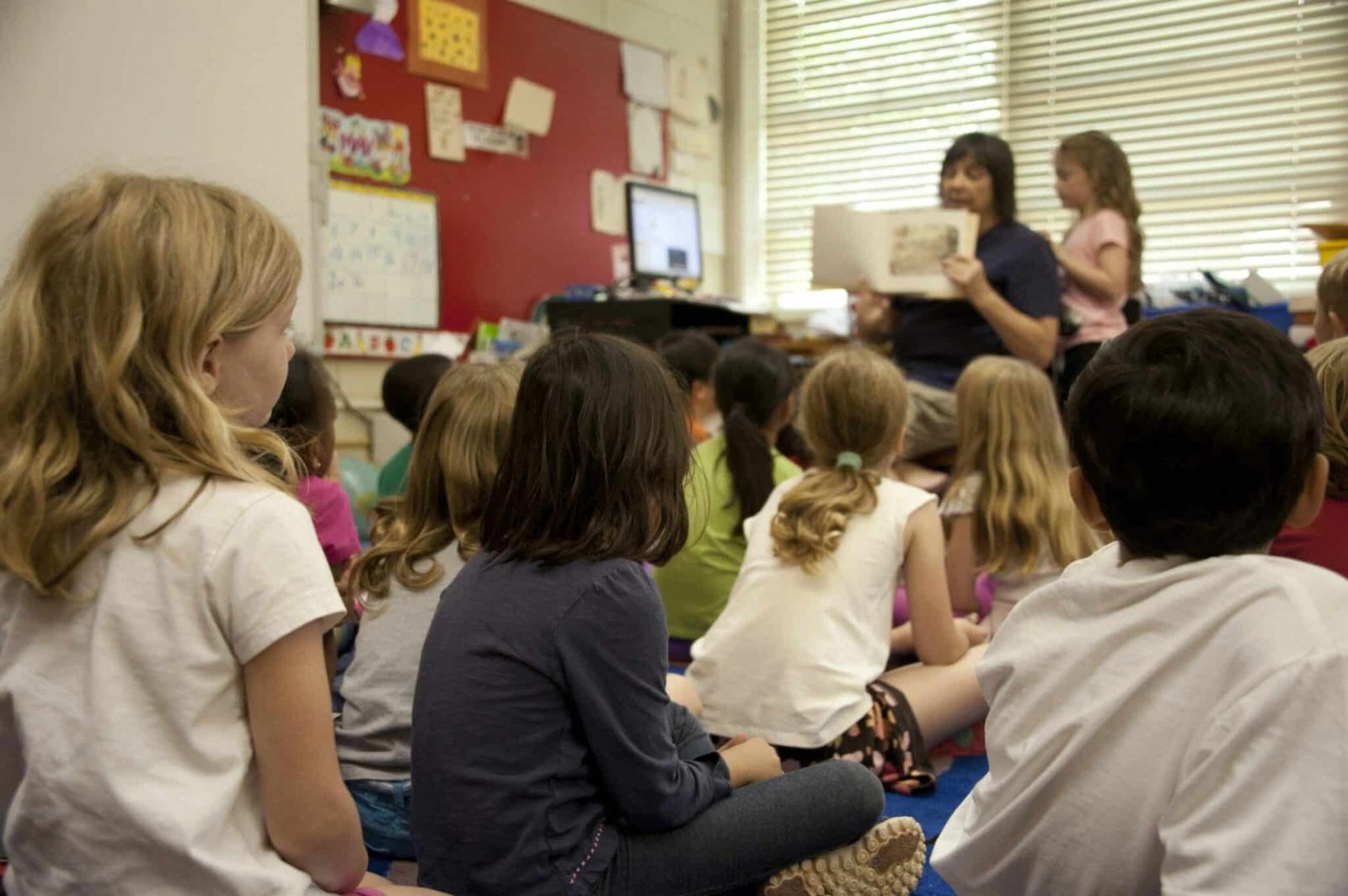Introduction to Learning Resources and Tools for Teachers

The landscape of education is continually evolving, emphasizing the necessity for educators to adapt their methodologies and incorporate diverse learning resources.Utilizing various resources is vital in enhancing student engagement and promoting an interactive learning environment. In contemporary classrooms, the integration of technology plays a pivotal role in transforming traditional teaching methods, allowing teachers to address diverse learning styles and preferences effectively.
Research underscores that students who engage with varied resources tend to demonstrate improved comprehension and retention of material. Tools such as educational software, digital learning platforms, and interactive simulations can facilitate active learning, catering to students’ individual needs and enhancing their academic experiences. The modern classroom is increasingly characterized by a blend of traditional techniques and innovative technology, highlighting an essential trend toward personalized education.
In recent years, educational technology has become more accessible and user-friendly, enabling teachers to incorporate tools such as interactive whiteboards, online collaboration platforms, and formative assessment applications. These resources not only support educators in delivering high-quality instruction but also empower students to take charge of their own learning. Moreover, the integration of technology fosters collaboration among peers, encourages critical thinking, and promotes creativity, which are vital skills for the 21st century.
As we delve deeper into this blog post, we will explore specific resources and tools that can be effectively utilized in the classroom. We will highlight how these instruments can assist teachers in enhancing their instructional strategies and creating more engaging and enriching learning experiences. Ultimately, the goal is to support educators in navigating the complexities of modern teaching by providing them with valuable insights into effective tools and resources.
Digital Learning Platforms

In recent years, digital learning platforms have emerged as critical tools in enhancing classroom learning. Platforms such as Google Classroom, Microsoft Teams, and Edmodo offer a multitude of features that facilitate communication, collaboration, and resource-sharing among teachers and students. These platforms have transformed traditional educational practices by integrating technology into the learning environment, thereby making the experience more engaging and interactive.
Google Classroom, for example, streamlines the assignment process by allowing teachers to create, distribute, and grade assignments quickly. It integrates seamlessly with other Google Workspace tools, enabling teachers to share documents, presentations, and spreadsheets effortlessly. Furthermore, Google Classroom fosters collaboration among students, allowing them to work on group projects and provide peer feedback in real-time. This platform not only promotes academic interaction but also enhances students’ digital literacy skills, a vital requirement in today’s technology-driven world.
Microsoft Teams serves a similar purpose, combining communication and collaboration features into one comprehensive platform. With its chat functionality, video conferencing capabilities, and file-sharing options, Microsoft Teams allows educators and students to connect in various ways. Teachers can create dedicated channels for different subjects and even conduct virtual classes, ensuring that learning can continue outside the traditional classroom setting. Its integration with Microsoft Office applications further enriches the learning experience by providing access to various tools essential for completing assignments and projects.
On the other hand, Edmodo offers a social networking-like environment which enhances student engagement through discussion forums and polls. This platform encourages interactive learning by allowing students to share their thoughts and insights while also receiving immediate feedback from peers and teachers. With Edmodo, educators can create custom quizzes and run virtual classrooms, helping to keep students actively involved in their learning journey.
Overall, the rise of digital learning platforms represents a significant shift in educational practices. Their ability to facilitate efficient communication, promote collaborative learning, and provide essential resources makes them invaluable in modern classrooms. Each platform presents unique features and benefits that cater to the diverse needs of educators and learners alike.
Interactive Whiteboards and Smart Boards

In contemporary educational environments, interactive whiteboards and smart boards have emerged as crucial resources, revolutionizing traditional teaching methodologies. These tools serve as a bridge between conventional instruction and modern, technology-driven approaches, enabling educators to create immersive learning experiences. The integration of interactive whiteboards in classrooms facilitates dynamic interactions, allowing teachers to present lessons that are not only informative but also engaging.
Interactive whiteboards offer functionalities that extend far beyond basic presentation. With the capability to showcase multimedia content, educators can incorporate videos, images, and animations into their lessons, enriching the learning atmosphere. This multi-modal approach caters to various learning styles, ensuring that visual, auditory, and kinesthetic learners all benefit from the instructional material. By utilizing smart boards, teachers can present complex concepts in an easily digestible format, promoting a deeper understanding among students.
Additionally, these innovative tools foster real-time feedback during class activities and discussions. Educators can pose questions and analyze students’ responses instantly, allowing for immediate clarification of doubts and reinforcing knowledge retention. This interactive engagement encourages participation, making students active contributors to their own learning processes. The ability to annotate lessons and save content also allows for seamless transitions in teaching, providing continuity and supporting diverse learning pathways.
Furthermore, interactive whiteboards and smart boards enhance collaborative learning experiences, enabling group work and peer discussions in a visually stimulating environment. By integrating cloud-based tools and online resources, these platforms open avenues for integrating personalized learning experiences, accommodating the diverse needs of students. Consequently, it becomes evident that such technology is not just an addition to classrooms; rather, it is a vital component that catalyzes effective learning and teaching experiences.
Educational Apps and Websites

In the era of digital learning, educational apps and websites have emerged as vital resources for teachers seeking to enhance classroom learning. These tools not only supplement traditional teaching methods but also provide personalized learning experiences that cater to individual student needs. A diverse range of platforms is available, designed to engage students in various subjects and age groups.
For younger learners, apps like ABCmouse and Starfall offer interactive and gamified lessons in reading, math, and science. These resources are specifically tailored for early education and provide engaging activities that help develop foundational skills. Moreover, platforms such as Prodigy Math make learning math enjoyable by integrating game mechanics with curriculum-aligned content, ensuring that students remain motivated while grasping essential concepts.
As students progress, resources like Khan Academy and Edmodo become increasingly beneficial. Khan Academy offers an extensive library of instructional videos and practice exercises across various subjects, ensuring that learners can master topics at their own pace. Edmodo, on the other hand, fosters collaboration by allowing teachers to create assignments, polls, and discussions, keeping students connected and engaged with their peers.
For high school students, Quizlet and Google Classroom provide versatile tools for studying and managing coursework. Quizlet allows students to create flashcards and study sets, facilitating effective memorization techniques. Google Classroom streamlines the communication and submission of assignments, enabling teachers to provide timely feedback and support.
These recommended educational apps and websites are just a glimpse into the vast array of options available to educators. By integrating these resources into their teaching strategies, teachers can create a more dynamic and responsive learning environment that empowers students to thrive academically.
Gamification in Education

The integration of gamification in education has emerged as a valuable approach for enhancing student engagement and motivation. By incorporating game-like elements into the learning process, educators can create an interactive environment that not only reinforces key concepts but also transforms traditional learning into an enjoyable experience. For instance, teachers can utilize platforms such as Kahoot and Quizizz, which involve quizzes and games that encourage student participation through competition and collaboration.
Games inherently possess the ability to captivate students’ attention and stimulate their desire to achieve, making them an excellent tool for reinforcing educational concepts. Through gamification, students are more likely to stay engaged and absorb information effectively. This approach fosters a dynamic classroom atmosphere where learners are motivated to participate actively rather than passively receiving information. Furthermore, by leveraging educational games, teachers can tailor learning experiences to challenge students appropriately, accommodating various skill levels and learning styles.
Platforms like Kahoot allow teachers to create quizzes that can be played in real-time, promoting a sense of urgency and excitement. Alternatively, Quizizz enables personalized quizzing with the unique advantage of allowing students to progress at their own pace. Both platforms offer insightful analytics, helping teachers monitor student performance and provide necessary feedback. The competitive elements of these tools can ignite students’ intrinsic motivation, pushing them to work harder to achieve mastery of the material.
In conclusion, gamification in education serves as a powerful strategy for enhancing classroom learning. By effectively employing game-based approaches and utilizing platforms designed for this purpose, teachers can significantly boost student engagement, making learning a more enjoyable and fruitful endeavor. As the educational landscape continues to evolve, embracing these innovative techniques will be crucial for fostering a motivated and active learning community.
Virtual Reality and Augmented Reality Tools

In recent years, the integration of virtual reality (VR) and augmented reality (AR) into educational practices has garnered significant attention as innovative tools for enhancing classroom learning. These immersive technologies offer students the opportunity to engage with content in ways that traditional teaching methods may not provide. By utilizing VR and AR, educators can transport students to various locations or historical periods, enriching their understanding of complex subjects through experiential learning.
Virtual reality creates a fully immersive environment, allowing learners to interact with a digitally constructed world. For instance, students can explore the depths of the ocean, walk through ancient civilizations, or even experience simulations of scientific phenomena. This ability to visualize and participate in experiences that are otherwise inaccessible fosters deeper comprehension, retention, and motivation. Moreover, VR is particularly beneficial for subjects such as science, geography, and history, where spatial understanding is crucial.
On the other hand, augmented reality enhances the real-world environment by overlaying digital information onto it. Utilizing devices such as tablets or smartphones, students can see 3D models of anatomical structures, interact with historical artifacts, or solve mathematical problems in real-time. This interactive layer not only engages learners but also motivates collaborative learning, as students can share and discuss their findings with peers while interacting with virtual elements in a tangible setting.
As educators increasingly recognize the potential of VR and AR, numerous resources and applications have been developed to support their implementation in the classroom. Platforms like Google Expeditions and Merge Cube facilitate upgraded teaching methodologies, making learning more interactive and enjoyable. By embracing these visually stimulating tools, teachers can substantially enhance classroom experiences, inspiring students to develop critical thinking skills and a greater appreciation for the subjects being studied.
Creative Project Management Tools

In the modern classroom, the efficient organization of group projects and assignments is crucial for fostering collaboration and tracking student progress. Creative project management tools like Trello, Asana, and Padlet have emerged as invaluable resources for teachers, streamlining the project management processes within an educational setting.
Trello is a versatile project management tool that utilizes boards, lists, and cards to help educators and students visualize tasks and manage workflows effectively. Teachers can create boards for different projects, allowing student teams to update their progress in real time. The visual aspect of Trello not only keeps students engaged but also helps them understand the various stages of project development, from brainstorming to completion.
Asana is another powerful tool that enhances project management by enabling teachers to assign tasks, set deadlines, and track student assignments with ease. Its user-friendly interface allows educators to create checklists and timelines, ensuring that students remain accountable for their responsibilities. By using Asana, teachers can foster a sense of ownership in students, encouraging them to take initiative and communicate better within their teams.
Padlet, on the other hand, offers a unique platform for collaborative brainstorming and sharing ideas. This tool allows students to post notes, images, and links on a virtual wall, promoting teamwork and creativity. Teachers can utilize Padlet for various class projects, facilitating discussions and encouraging students to contribute their thoughts in a more dynamic and interactive format.
In summary, the integration of project management tools like Trello, Asana, and Padlet not only assists teachers in organizing group projects but also empowers students to collaborate effectively. By incorporating these tools into classroom practices, educators can enhance learning experiences and cultivate skills essential for future academic endeavors and real-world teamwork.
Assessment and Feedback Tools

In the modern educational landscape, assessment and feedback tools have become crucial for teachers aiming to enhance classroom learning. These tools facilitate the collection of valuable insights regarding student performance, enabling educators to tailor instruction effectively. Among the most popular assessment tools are Google Forms, Formative, and Socrative. Each of these platforms offers unique features designed to support teachers in their assessment practices.
Google Forms, a versatile tool, allows educators to create custom assessments quickly. Teachers can design multiple-choice questions, open-ended responses, and various other question types. The real-time feedback provided by Google Forms enables teachers to analyze student responses efficiently. By examining the data, educators can identify areas where students excel or struggle, allowing them to adjust their teaching strategies to address these gaps. Additionally, Google Forms integrates seamlessly with Google Classroom, improving workflow and accessibility.
Formative offers a more dynamic approach to assessment. This platform provides real-time feedback to both students and educators as assessments occur. Teachers can use Formative to pose questions during lessons, gauge student understanding instantly, and intervene when necessary. The ability to reallocate instructional focus based on immediate feedback has proven beneficial in enhancing learning outcomes. Furthermore, the platform’s analytical tools assist teachers in tracking progress over time, which is critical for adjusting instruction and providing individualized support.
Socrative is another powerful assessment tool that promotes student engagement. By allowing teachers to create quizzes, polls, and exit tickets, it fosters an interactive learning environment. Socrative’s immediate feedback mechanism informs educators about student comprehension levels during lessons. This capability enables teachers to modify instruction on the fly, ensuring that students remain on the path to success. By utilizing these assessment and feedback tools, educators can create a more responsive and effective learning environment that ultimately leads to improved educational outcomes.
Conclusion: The Future of Tools for Teachers

As we reflect on the transformative journey of classroom learning tools, it is evident that the rapid advancement of educational technologies has reshaped the way teachers facilitate learning. The integration of digital resources in educational environments has enabled a shift towards more engaging, personalized, and interactive learning experiences. The future of classroom learning promises an array of possibilities, driven by innovation and a commitment to enhancing student outcomes.
Emerging technologies such as artificial intelligence, augmented reality, and adaptive learning systems are paving new pathways for dynamic educational experiences. These tools provide educators with the ability to tailor lessons to meet the diverse needs of students, fostering an inclusive environment that promotes equity in education. Furthermore, collaborative tools enable real-time communication and cooperation among students, enhancing classroom engagement and ensuring that every student has the opportunity to contribute and thrive.
Teachers are encouraged to embrace these evolving resources, as they hold the potential to simplify complex concepts and bring abstract ideas to life. Being proactive in exploring and implementing these tools is vital for educators aiming to create a stimulating learning atmosphere. Additionally, the continuous professional development and training on emerging technologies will equip teachers with the skills necessary to leverage these advancements effectively.
In conclusion, the classroom of the future will undoubtedly be shaped by our current willingness to adapt and innovate. By incorporating state-of-the-art educational technologies, teachers can revolutionize their teaching practices and prepare students for the challenges of a rapidly changing world. The journey of enhancing classroom learning through these essential tools holds immense promise, heralding a new era of education that values creativity, adaptability, and inclusivity.



Pingback: Academic Rigor: 7 Key Strategies for Success
Pingback: Discipline in Education: Empowering Success Strategies